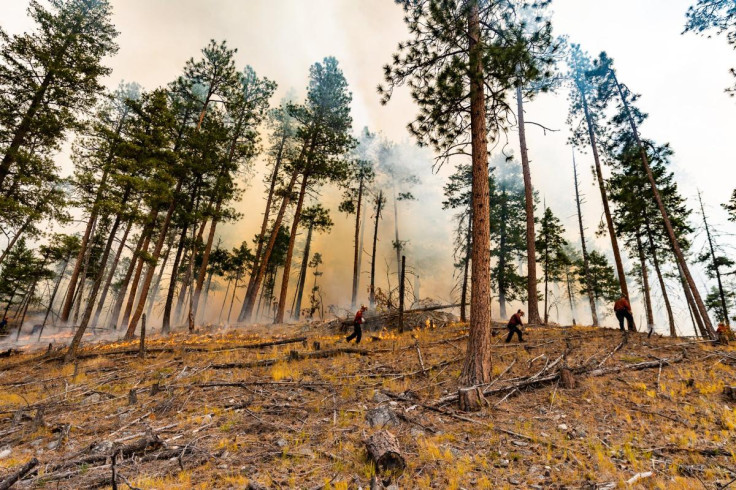Chase Fire Prompts Evacuation Call: How Big Is the Wildfire and What Do We Know So Far?
Officials urge residents to stay alert, avoid the fire zone, and prepare for possible further evacuations as the situation remains unstable

A fast-moving wildfire near the town of Chase in British Columbia has triggered emergency evacuation orders and the declaration of a local state of emergency.
The Mount Scatchard blaze, confirmed to be human-caused, broke out on Sunday afternoon (30 June) and has since expanded quickly, raising concerns about the threat to nearby communities.
Rapid Growth in Challenging Conditions
First reported around 3 p.m. local time near Highway 1, just west of Chase, the fire initially covered about 0.25 hectares. However, with hot, dry weather and shifting wind patterns, the blaze grew swiftly throughout the afternoon and evening. By late Sunday, it had reached an estimated 35 hectares. Earlier that same afternoon, British Columbia Wildfire Service (BCWS) data noted its growth to 4 hectares and then 14 hectares within hours.
Authorities are still investigating the precise cause, but local officials have urged anyone with information about how the fire started to contact the relevant agencies.
Temperatures in the area soared to around 30°C on Sunday, with low humidity and high UV levels further complicating firefighting efforts. Gusty and unpredictable winds added to the challenge, causing flare-ups and driving the fire towards forested areas near the Neskonlith reserve.
Evacuations Ordered for Reserve Communities
In response to the escalating situation, the Neskonlith Indian Band issued a mandatory evacuation order for residents on reserve land most at risk from the advancing fire. Evacuees were directed to the Adams Lake Recreation and Conference Centre, where emergency support services are providing shelter, food, and essential supplies.
As of Monday morning (1 July BST), no evacuation alerts have been issued for the nearby Village of Chase or for homes in the surrounding Thompson-Nicola Regional District. However, officials are warning that conditions remain dynamic, and further evacuations could become necessary if the fire continues to spread.
Firefighting Response and Air Support
The BC Wildfire Service (BCWS) has deployed 22 ground personnel, supported by two helicopters, seven skimmer planes, and additional fixed-wing aircraft to combat the wildfire, which remains largely uncontained. While mostly classified as a low-intensity Rank 2 fire, crews have encountered occasional Rank 3 flare-ups with more vigorous behaviour. A strict no-fly zone is in place to protect aerial operations.
While BCWS is investigating, local eyewitness reports and authorities suggest the fire may have been sparked by a truck carrying hay whose load caught flame on the descent from Harper Mountain, igniting surrounding grasses and shrubs. Should this be confirmed, it would underscore the ongoing risk of human‑caused wildfires.
The fire, burning primarily in rural, forested areas, has prompted a focus on safeguarding homes and infrastructure near the Neskonlith reserve. Officials urge the public to avoid the fire zone, respect road closures, and limit non-essential travel to ensure emergency crews can work safely.
Residents in surrounding communities are being advised to stay alert, monitor official wildfire alerts, and be prepared to evacuate if conditions worsen. Authorities have also urged the public to respect emergency road closures and avoid unnecessary travel near affected areas.
© Copyright IBTimes 2025. All rights reserved.




















